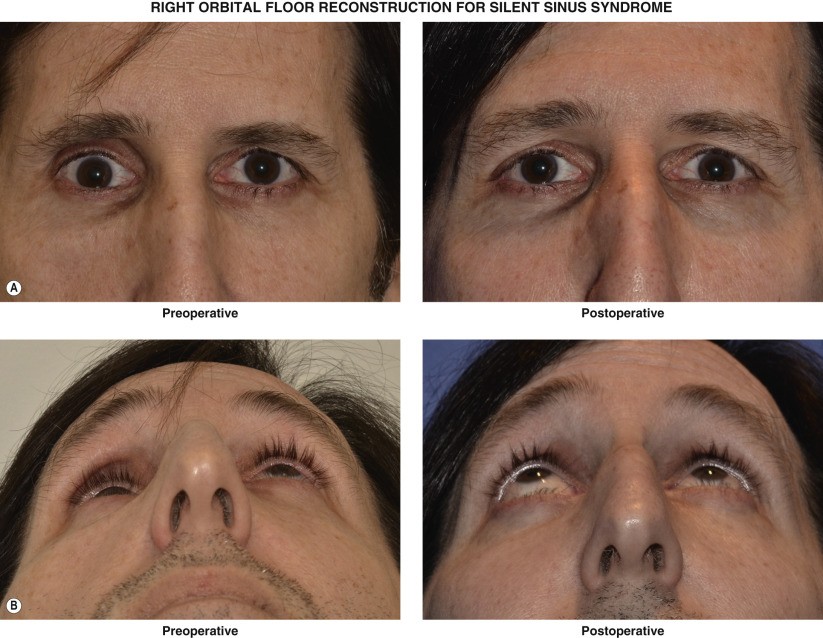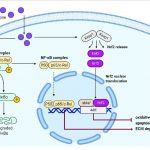
Contents
Silent Sinus Syndrome: Causes, Symptoms, and Treatment
Silent sinus syndrome (SSS) is a rare condition characterized by painless enophthalmos (eye sinking into the orbit) and hypoglobus (eye drooping). SSS can affect individuals of all ages and genders, with those aged 30 to 60 being more commonly affected. The exact cause of SSS is not fully understood but is believed to be related to chronic sinusitis, which can lead to bone erosion around the sinus.
The collapse of the maxillary sinus, located in the cheekbone area, leads to enophthalmos and hypoglobus. Some possible causes include chronic sinusitis, nasal or sinus surgery, nasal tumors, or facial trauma.
Early diagnosis of SSS is crucial as it can prevent further damage, improve treatment outcomes, and restore normal sinus function and facial symmetry. SSS can lead to severe eye drooping and other facial asymmetries. Additionally, early diagnosis helps identify underlying causes such as chronic sinusitis or nasal tumors, which require prompt treatment for overall sinus and respiratory health.
Early treatment improves the chances of restoring normal sinus function and facial symmetry, preventing complications, and improving quality of life. Facial asymmetries caused by SSS can cause distress and self-consciousness.
The Cause of Silent Sinus Syndrome
The exact causes of SSS are not well understood, but theories include maxillary sinus hypoventilation caused by ostiomeatal complex (OMC) blockage. OMC helps with mucus drainage and airflow between the sinuses. Obstruction in the OMC leads to negative pressure within the sinus, resulting in maxillary sinus atelectasis.
Chronic inflammation or infection of the maxillary sinus may also weaken the sinus walls, causing them to collapse and reduce sinus volume.
Trauma to the face or nose can also contribute to SSS by damaging the sinus walls or altering the position of the orbital floor.
Although the main issue lies within the sinuses, people often experience enophthalmos without sinus symptoms.
Signs and Symptoms of Silent Sinus Syndrome
The signs and symptoms of SSS can vary. Common symptoms include:
- Facial asymmetry
- Enophthalmos (eye sinking into the orbit)
- Hypoglobus (eye drooping)
- Diplopia (double vision)
- Blurred vision (refractive errors)
Diagnosis of Silent Sinus Syndrome
The diagnosis of SSS involves a physical examination and imaging studies. Radiological studies such as CT scans or MRIs provide detailed images of the sinuses. Nasal endoscopy allows a detailed view of the sinus structures and identifies any blockages or issues.
Diagnosis can be challenging as symptoms can resemble those of other conditions. However, with a thorough examination and appropriate tests, doctors can make an accurate diagnosis and recommend treatment.
Treatment of Silent Sinus Syndrome
SSS is treated surgically through endoscopic sinus surgery (ESS) or dacryocystorhinostomy (DCR).
Nonsurgical approaches manage symptoms and prevent further damage. Medications may be prescribed to reduce inflammation or relieve congestion. Nasal irrigation with a saline solution helps remove mucus and irritants.
Lifestyle changes such as quitting smoking and avoiding allergens reduce the risk of sinus inflammation.
Endoscopic sinus surgery (ESS)
ESS uses a small endoscope to visualize and access the sinuses. The surgeon removes obstructions or diseased tissue to open up the blocked sinus and restore normal airflow and drainage.
ESS can improve symptoms and prevent further collapse of the orbital floor.
Dacryocystorhinostomy (DCR)
DCR creates a new passageway between the tear ducts and nasal cavity, improving drainage and ventilation in the affected sinus. This procedure relieves negative pressure and prevents further collapse of the orbital floor.
Postoperative care and follow-up appointments are essential to monitor healing.


